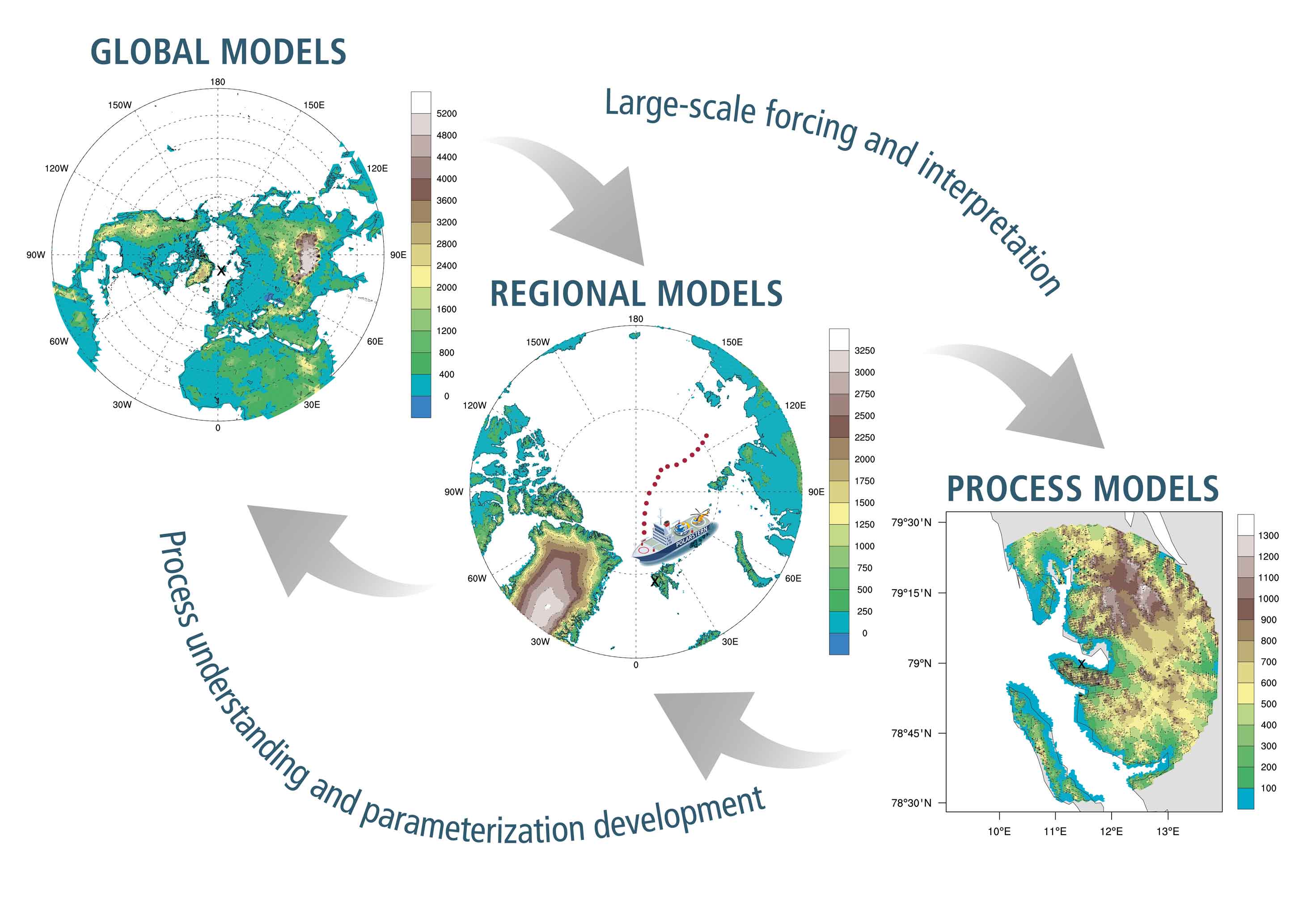Modelling within (AC)³
To make full use of the planned unique observations, comprehensive and adequate modelling activities are mandatory. Models will guide the planning and performance of field campaigns; they will be used as testbeds to evaluate different parameterisations, analyse and quantify feedback mechanisms and the importance of different processes for Arctic climate.
The hierarchy of models employed within (AC)³ ranges from high–resolution process models to meso–scale, regional, and global models. Only this hierarchy allows a reasonable knowledge transfer from the local-scale process observations and parameterisation evaluation to the large climate and feedback scales. These achievements will be also helpful for operational weather forecast and sea ice prediction centres.

llustration of the ICON model family used within (AC)³ representing the model strategy and the coverage from global to local scales. Global modelling includes ICON: Icosahedral non–hydrostatic atmospheric general circulation model, ICON–HAM: Coupled climate–aerosol model, ICON–SWIFT: Coupled climate–ozone model, and ICON–O: Icosahedral global ocean model. Regional modelling applies ICON as a nested Limited Area Model (LAM), while on the process level simulations with the ICON-LEM (Large-Eddy Model) will be performed. These ICON family members will be for the first time extensively tested and utilised in the Arctic region.
(AC)³ Modelling tools



